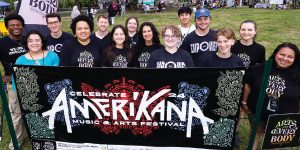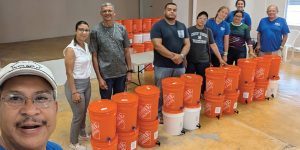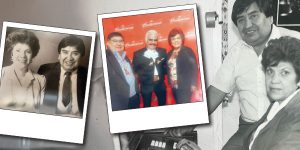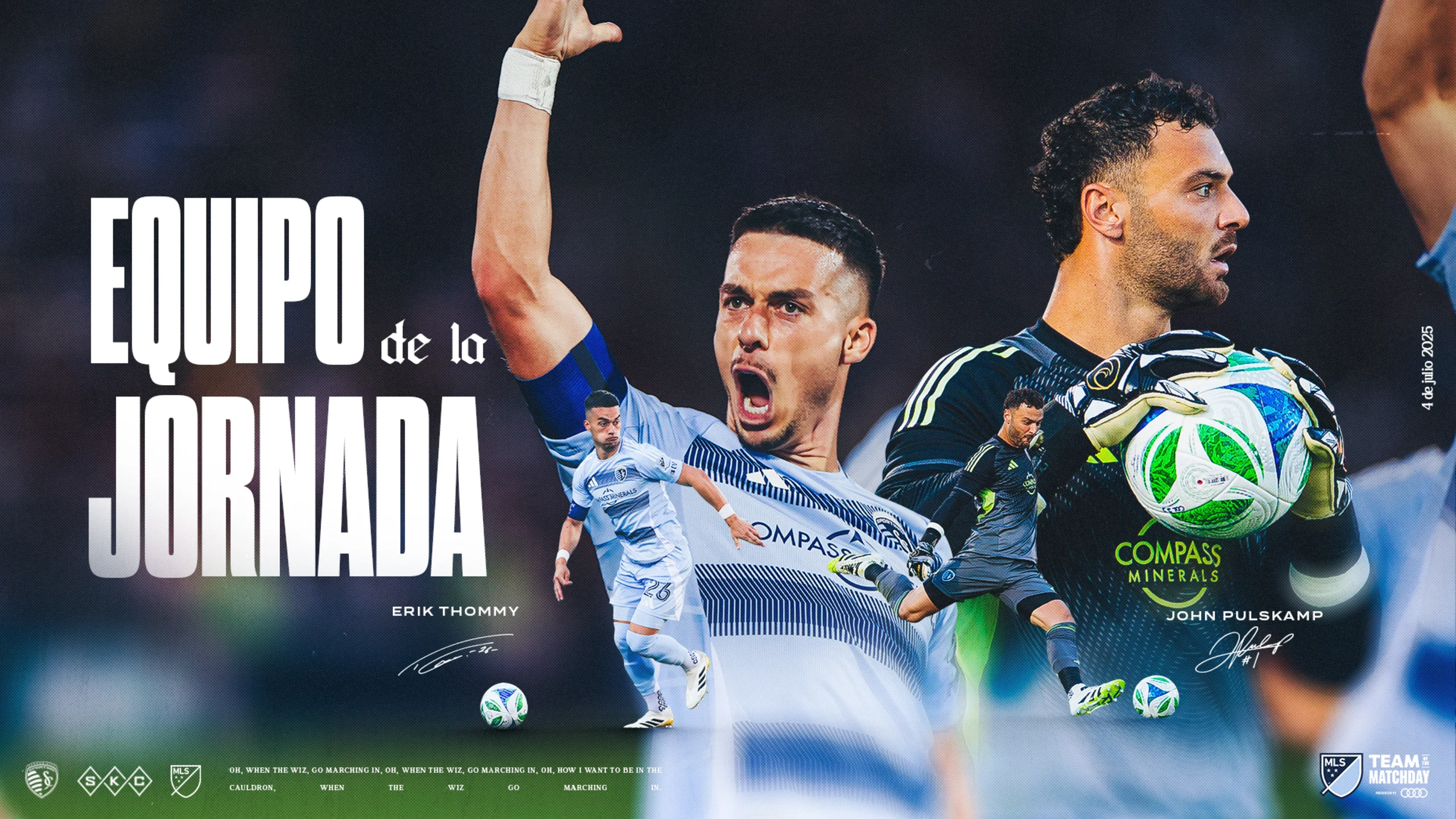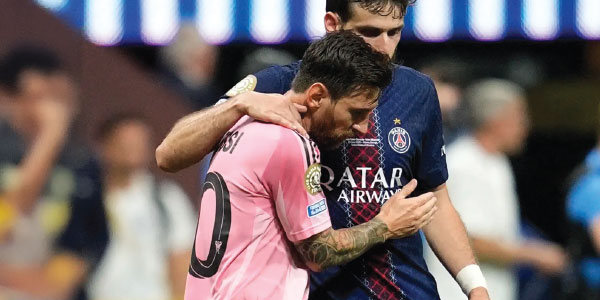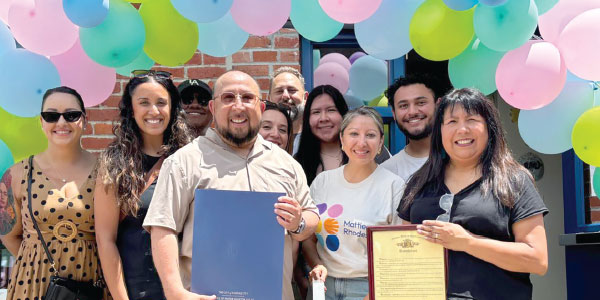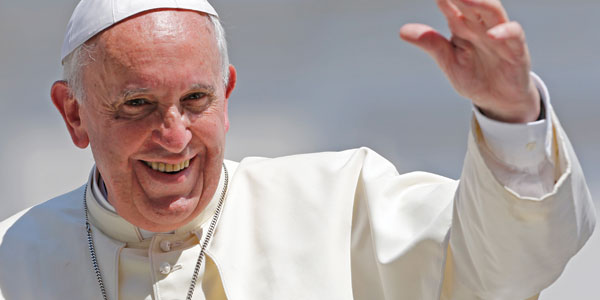
CIUDAD DEL VATICANO — Todo comenzó con una pregunta: Si sólo tuviera 10 segundos con el papa Francisco, ¿qué le diría?
Este mes, los editores de las revistas Fortune y Time me invitaron a participar en el Foro Global en Roma junto con un centenar de empresarios, filántropos, académicos, sindicalistas, religiosos y periodistas de todo el mundo. El objetivo era proponer soluciones concretas a problemas muy graves — pobreza, medio ambiente, salud, migración — y luego presentárselas en persona al Papa (vale la pena leer las conclusiones: bit.ly/2h91PYD). Eso lo hizo irresistible.
Una entrevista con el Papa es, sin duda, una de las ambiciones de cualquier periodista, pero es casi imposible — muy pocos lo logran. Además, mis fuertes críticas públicas a los abusos sexuales de sacerdotes contra niños, y a la complicidad de la jerarquía clerical en esos crímenes, prácticamente me descalificaron hace años para sentarme en una entrevista con cualquier Papa. Y si a eso le sumamos mi condición de ex-católico y agnóstico, las posibilidades se reducen a casi cero. Por eso brinqué ante la oportunidad de conocer al Papa, aunque fuera solo por unos segundos.
Todo, por supuesto, comenzó en el infierno. Antes de ver al Papa visitamos la Capilla Sixtina, y ahí pasamos por una puerta debajo del infierno que pintó el artista Miguel Ángel hace más de 450 años. Es terrorífico — el sufrimiento eterno que sugiere asusta hasta al más escéptico.
Tras una larga caminata por pasillos cargados de lujo, excesos e historia, llegamos a la maravillosa Sala Clementina donde tendríamos una reunión íntima con el Sumo Pontífice. Íntima, en la definición del Vaticano, implica por supuesto 400 personas.
Nunca he visto a gente tan poderosa esperar tanto tiempo por alguien. Pero cuando entró el Papa argentino al salón, vestido de blanco y sonriendo, hubo un“ahhhh” colectivo. El impacto fue tal que nadie se atrevió, ni siquiera, a aplaudir. Silencio absoluto.
El Papa, de casi 80 años, no se siente a gusto hablando inglés, el idioma del poder. Así que en italiano nos pidió lo siguiente: “Rezo para que involucren en sus esfuerzos a quienes quieren ayudar; denles una voz, escuchen sus historias, aprendan de sus experiencias y comprendan sus necesidades. Vean en ellos a un hermano o hermana, a un hijo o hija, a una madre o un padre. En medio de los retos de nuestros días, vean las caras humanas en aquellos que tanto quieren ayudar”. Esto se entiende en cualquier lenguaje.
Luego llegó el momento que todos estábamos esperando: el encuentro, y la foto, con el Papa. Pero nada es fácil en el Vaticano. Todo requiere de un protocolo, de uniformes y de reglas centenarias.
El papa Francisco se paró de su enorme silla blanca, dio una decena de pasos, y, acompañado de un ayudante personal, un encargado de protocolo y otro de seguridad, un monseñor, un fotógrafo, un camarógrafo y un guardia suizo a lo lejos, comenzó a tomarse fotos con todos y cada uno de sus invitados.
No sé cómo, pero en el tedioso ejercicio fotográfico que duró unos 20 minutos, el Papa nunca perdió la sonrisa, ni dejó de saludar de mano y establecer contacto visual con cada persona. El efecto fue inmediato. Gente emocionada, llorando; otros paralizados. Los más agresivos convertidos, de pronto, en tímidos y silenciosos. “Es lo más cerca que he estado de Dios”, me dijo una conmovida invitada.
Hice la fila y llegó mi turno. El papa todavía sonreía, sin aparente esfuerzo. Di un paso adelante y él tendió su mano. La sentí firme pero acogedora. Suave. Casi pequeña. Busqué sus ojos aunque estuve tarde. Él ya tenía los suyos sobre mí. Respiré a la mitad y solté lo memorizado: “Papa Francisco, no olvide a los inmigrantes que Trump quiere deportar”.
Jorge Mario Bergoglio subió levemente la cabeza, abrió sus ojos un poco más, y estoy seguro que oyó bien lo que le dije. Pero no dijo absolutamente nada, ante la mirada vigilante de sus asistentes. Este, supongo, no era el momento de crear un nuevo conflicto trasatlántico. Lo que sale del Vaticano siempre está pensado y repensado. La espontaneidad en la diplomacia es pecado. Escuché cinco o seis “clicks”del fotógrafo, con sus respectivos flashazos. Luego el Papa soltó mi mano y dirigió su mirada al siguiente de la fila. Eso fue todo. Así fueron mis 10 segundos con el Papa.
Hay días que sabes que no se podrán repetir ni superar. Este fue uno de ellos.
(Aquí esta el video de mis 10 segundos con el Papa: bit.ly/2h64Rjv.)
(Jorge Ramos, periodista ganador del Emmy, es el principal director de noticias de Univision Network. Ramos, nacido en México, es autor de nueve libros de grandes ventas, el más reciente de los cuales es “A Country for All: An Immigrant Manifesto”.)
(¿Tiene algún comentario o pregunta para Jorge Ramos? Envíe un correo electrónico a Jorge.Ramos@nytimes.com. Por favor incluya su nombre, ciudad y país.)
10 Seconds With Pope Francis
VATICAN CITY — If you had 10 seconds with Pope Francis, what would you tell him? In the past, I’ve wondered what I would say. Now I know.
Earlier this month, the editors of Time and Fortune magazines invited me to take part in their Global Forum in Rome, joining a group of business leaders, philanthropists, scholars, clergy and other journalists. The mandate was to discuss and propose solutions to some of the world’s most pressing problems — poverty, environmental issues, health care, immigration. The conclusions would be presented to Pope Francis in person (they’re worth reading: bit.ly/2h91PYD). That made the invitation irresistible.
Scoring an interview with the pope is a lofty goal for any ambitious reporter — but it’s almost impossible to achieve. Very few journalists get the opportunity to sit down with the pope. In my case, my vocal criticism of the Catholic Church over the sexual abuse of children at the hands of priests — and the leadership’s complicity in covering up these crimes — disqualified me long ago from interviewing any pontiff. Add to that my agnosticism, and the chances were almost zero. Therefore I jumped at the chance to meet the pope, even if it was only for a few seconds.
My passage to Pope Francis began in hell. Before meeting him, our group was led through the Sistine Chapel. Above us on the famous ceiling was Michelangelo’s depiction of hell, painted more than 450 years ago. His vision of eternal suffering is terrifying, even for the most skeptical observer.
After a long walk through lavishly appointed, history-laden corridors, we reached the Vatican’s grand Clementine Hall, where we were to have an intimate meeting with the pontiff. (In Vatican-speak, “intimate” means some 400 people.)I’ve never seen so many influential people wait so long to greet anyone. But when the Argentine pope entered the hall, smiling in his white garb, there was a collective sigh of awe. No applause — absolute silence.
The pope, who is almost 80, doesn’t feel comfortable speaking English, so he greeted us in Italian. “I pray … that you may involve in your efforts those who you seek to help,” he said. “Give them a voice, listen to their stories, learn from their experiences and understand their needs. See in them a brother and a sister, a son and a daughter, a mother and a father. Amid the challenges of our day, see the human faces on those you earnestly seek to help.”
Then the moment we all were waiting for: a meeting and photo op. Pope Francis stood up from his huge white chair, took a dozen steps and, joined by a personal assistant, a protocol chief, a security guard, a monsignor, a photographer and the Swiss guard (the Vatican does everything according to centuries-old protocol), began a photo session with each and every guest.The pope never stopped smiling during this 20-minute ordeal, and he shook hands and made eye contact with everyone. After meeting him, some people were deeply moved and wept; others simply fell silent. “This is the closest I’ve been to God,” one guest told me.
When my turn came, the pope was still smiling effortlessly. I stepped forward, and he stretched out his hand. I took it, and it felt firm but warm. Almost small. I looked to make eye contact, but I was a bit slow, and then my gaze met his. I took a deep breath and said in Spanish what I decided I would say and had rehearsed in my head.
“Pope Francis, don’t forget the immigrants that Trump wants to deport.”The pope, formerly Jorge Mario Bergoglio, raised his head slightly and opened his eyes a little wider. I’m sure he heard what I said. But he didn’t say a word, under the alert scrutiny of his assistants. I guess that wasn’t the appropriate moment to create a new transatlantic controversy. After all, any Vatican communication is always very carefully thought out. Spontaneity in diplomacy is a sin.
Next, I heard five or six clicks from the photographer. Then the pope let go of my hand and turned his eyes to the next guest. That was it. Those were my 10 seconds with the pope.
There are days you know will never be repeated or topped. This one was one of those days.
(Watch the video of my 10 seconds with Pope Francis here: bit.ly/2h64Rjv.)
(Jorge Ramos, an Emmy Award-winning journalist, is a news anchor on Univision and the host of “America With Jorge Ramos” on Fusion. Originally from Mexico and now based in Florida, Ramos is the author of several best-selling books. His latest is “Take a Stand: Lessons From Rebels.” Email him at jorge.ramos@nytimes.com.)



